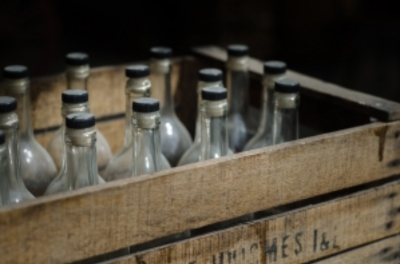How to Protect Yourself from Illegal and Counterfeit Alcoholic Beverages
How to Protect Yourself from Illegal and Counterfeit Alcoholic Beverages
The consumption of illegal alcoholic beverages represents a serious health risk. Recent cases of methanol poisoning in Brazil highlight the importance of paying close attention to the source of what you consume. Methanol, a highly toxic substance irregularly used in the production of counterfeit drinks, can cause irreversible damage such as blindness and even death. Understand the dangers of illegal alcohol and learn how to protect yourself.
Recently, several alarming cases of methanol poisoning have been reported, especially in the state of São Paulo, Brazil. Victims experienced severe symptoms such as blindness, intense pain, and organ failure, with some unfortunately resulting in fatal outcomes. These events have reignited warnings about the risks involved in consuming illegal alcoholic beverages.
Illegal alcohol, also known as “unregistered alcohol,” encompasses three main categories: homemade or artisanal beverages produced informally; counterfeit or smuggled drinks; and “substitute” beverages, which are inappropriate for human consumption, such as perfumes and cleaning products. Essentially, illegal beverages are those that, in some way, do not comply with the quality and/or taxation standards required by a country.
It is important to distinguish between the terms “illegal alcohol” and “unregistered alcohol.” While all illegal alcohol is considered unregistered, not all unregistered alcohol is illegal. For example, an alcoholic beverage legal in one country but consumed in another where it is not registered is not necessarily illegal. In other words, these categories are similar but have significant differences.
The latest report from the World Health Organization (WHO) estimated that about 21% of alcohol consumed worldwide is unregistered. Illegal alcohol, by not following sanitary and tax regulations, brings economic and public health consequences. Its composition is variable and may contain, besides ethanol and water, fermentation residues, additives, flavorings, and dangerous by-products such as methanol.
Methanol is a type of industrial alcohol used in products like fuels, solvents, and antifreeze, and is not suitable for human consumption. When ingested, even in small amounts, methanol is metabolized in the body into highly toxic substances such as formaldehyde and formic acid, which can cause nausea, dizziness, difficulty breathing, blurred vision, and in severe cases, permanent blindness, coma, and death. For this reason, its presence in illegal alcoholic beverages represents a severe public health risk.
Alcoholic beverages can be intentionally adulterated with cheap methanol to increase profit and potency. Between 2017 and 2019, approximately 7,104 people were reported intoxicated and over 1,888 deaths occurred in 306 outbreaks of methanol poisoning worldwide, with more than 90% of cases happening in Asia, mainly affecting young men. Additionally, methanol naturally occurs in most alcoholic beverages, originating from pectin degradation during fermentation, and can reach high concentrations during improper distillation, particularly in fruit spirits (up to 2.4% by volume). The maximum methanol allowed in distilled spirits by Brazilian legislation is 20.0 mg/mL of anhydrous alcohol.
A team of researchers and engineers from the Particle Technology Laboratory and the University Hospital of Zurich created a device to measure methanol content in alcoholic beverages. The device, designed to be accessible to the public, sends collected data to a smartphone app that displays methanol and ethanol levels in the drink. It also alerts users if levels exceed safe limits. Unfortunately, the device is not yet available on the market.
Without proper identification, it is impossible to guarantee the authenticity of a beverage, increasing the risk of consuming counterfeit, adulterated, or even dangerous products. To avoid consuming illegal alcohol, consider the following guidelines:
- Be alert to unusual characteristics in the drink, such as strange odors, unusual colors, and consistency;
- Be suspicious of prices far below the market value, especially in online stores;
- Examine the packaging and label to ensure information is clear and complete. The seal should be intact. Watch out for labels with poor printing quality and spelling mistakes. Whiskey, gin, vodka, and cachaça are the most frequently counterfeited beverages;
- Prefer to buy from reliable sources with good reputations that provide invoices;
- Inform yourself about legitimate local brands and products. Be cautious with brands you have never seen before.
Attention and information are the best forms of prevention against intoxications and other serious health damages.
References:
1 - Centro de Informações sobre Saúde e Álcool (CISA). Álcool e a Saúde dos Brasileiros: Panorama 2020. (2020). São Paulo.
2 - Organização Mundial da Saúde (OMS). Global Status Report on alcohol and health and treatment of substance use disorders 2024.
3 - Abegg, S., Magro, L., van den Broek, J. et al. A pocket-sized device enables detection of methanol adulteration in alcoholic beverages. Nat Food 1, 351–354 (2020). https://doi.org/10.1038/s43016-020-0095-9


